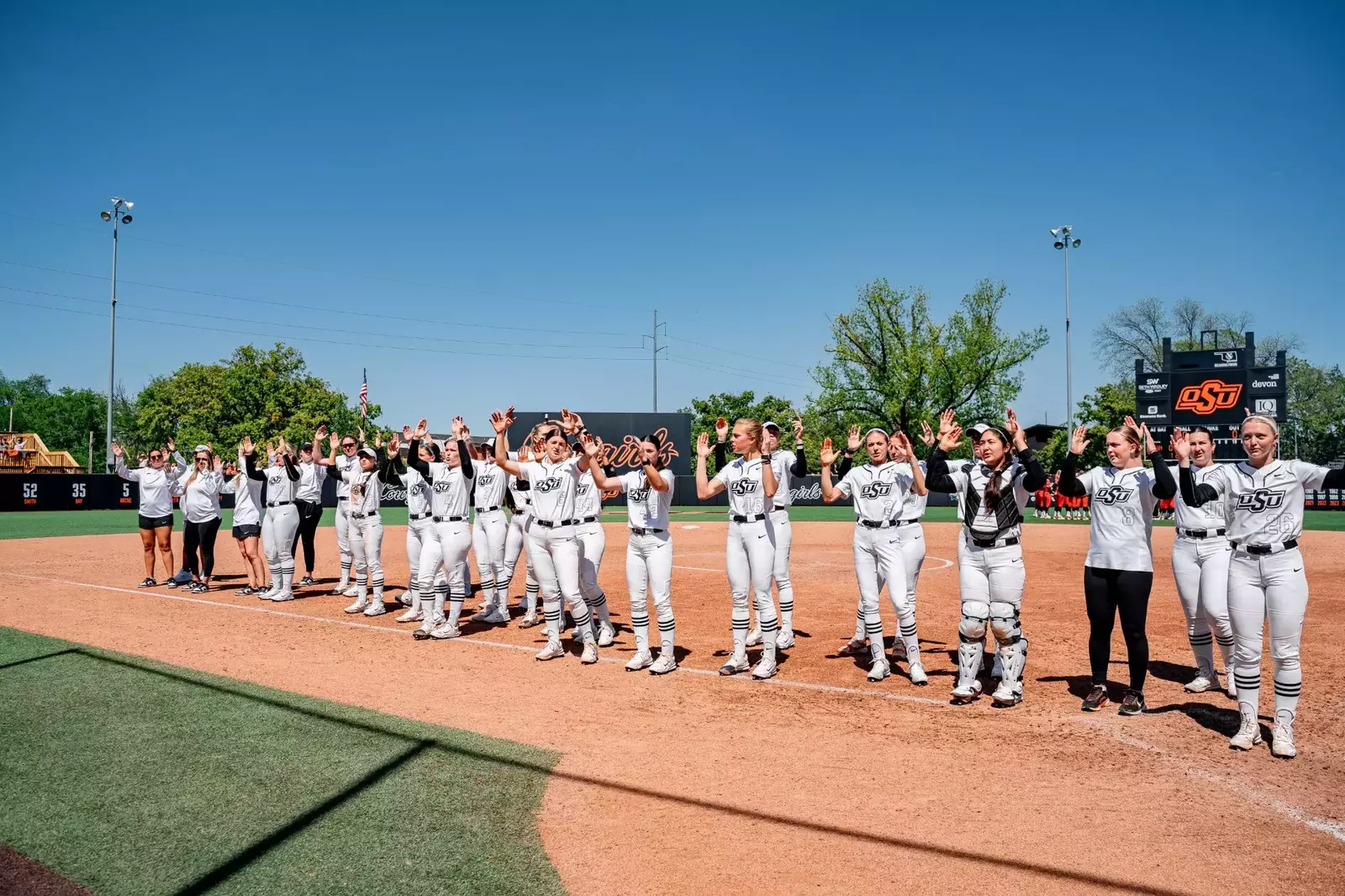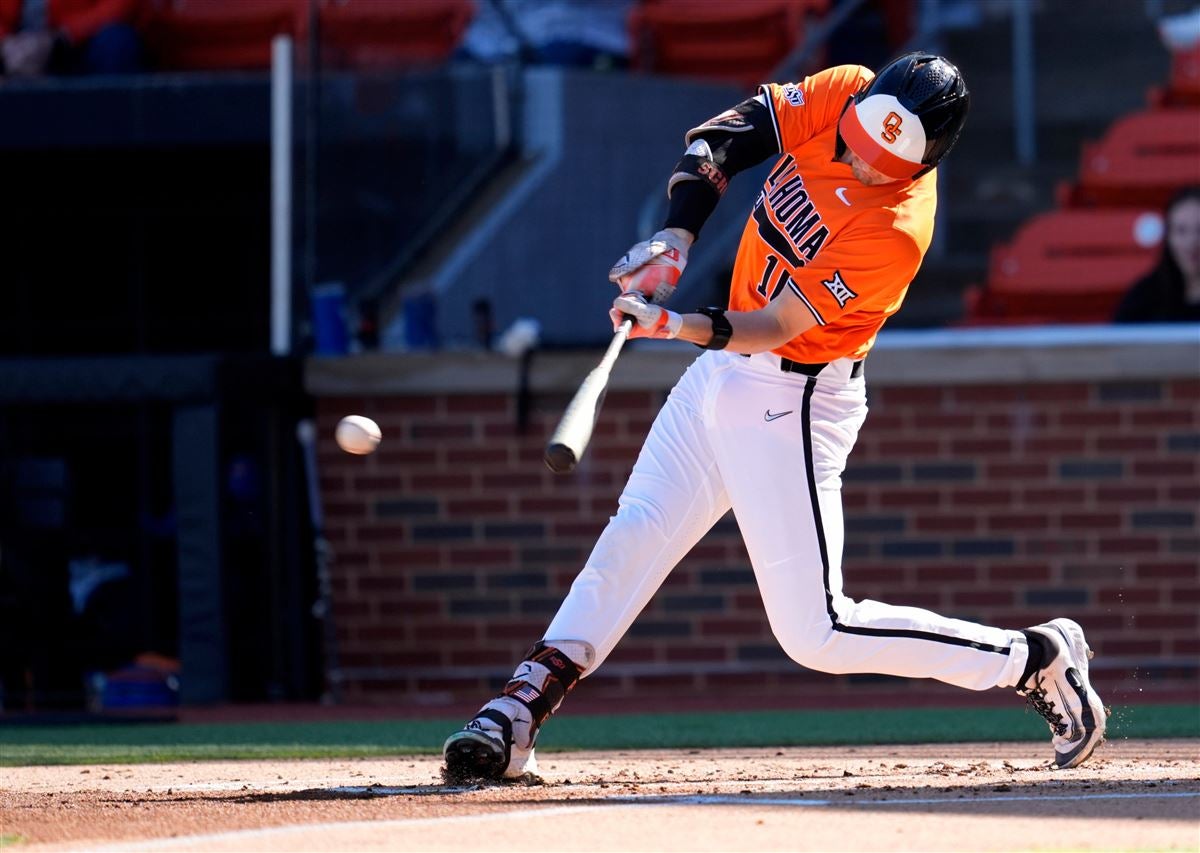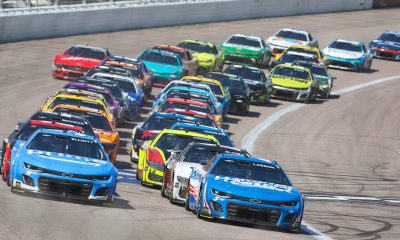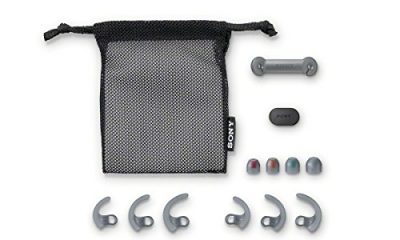NIL
Cowgirl Softball set for Phillips 66 Big 12 Softball Championship
The basics The No. 23/23 Oklahoma State softball team (33-17 overall, 13-9 Big 12) is the No. 4 seed at this week’s Phillips 66 Big 12 Championship in Oklahoma City. The Cowgirls take on No. 5 Arizona State at 11 a.m. Thursday in Devon Park. The winner of that contest faces either Texas […]

The basics
The No. 23/23 Oklahoma State softball team (33-17 overall, 13-9 Big 12) is the No. 4 seed at this week’s Phillips 66 Big 12 Championship in Oklahoma City. The Cowgirls take on No. 5 Arizona State at 11 a.m. Thursday in Devon Park.
The winner of that contest faces either Texas Tech, Baylor or Kansas in the semifinal round at 3 p.m. Friday. The championship game is set for 11 a.m. Saturday.
Watch, Listen, Follow
All games at the Phillips 66 Big 12 Championship are streamed live on ESPN+. Saturday’s title game on ESPN is the only one with a linear broadcast.
All of OSU’s games can be heard live on KGFY-FM 105.5 and stillwaterradio.net and streamed on the Varsity Network app with Ryan Breeden on the call.
Live stats for all of OSU’s games are available online at okstate.statbroadcast.com.
Fans can follow @CowgirlSB on X all season for regular coverage, including a live scoreboard.
Postseason pedigree
Oklahoma State has seven conference tournament titles in its history – six in the Big Eight (1980, 1981, 1989, 1990, 1991 and 1992) and one in the Big 12 (2022).
In the rankings
Oklahoma State is No. 23 in the USA Today/NFCA Coaches poll and No. 23 in the ESPN.com/USA Softball poll. The Cowgirls are unranked in the D1Softball and Softball America polls.
In the NCAA Ratings Percentage Index, which looks at wins and strength of schedule, Oklahoma State is No. 20 and Arizona State is No. 34.
Oklahoma State from a distance
Winners of four in a row and six of the last seven to close the regular season, Oklahoma State enters the postseason with momentum on its side. The current four-game winning streak matches OSU’s second-longest of the season and six wins in seven games marks the second-best seven-game stretch of the Cowgirls’ season.
OSU faced the nation’s toughest schedule for the first few weeks and came out of it with wins over No. 9 Florida State, No. 23 Kentucky, No. 5 Texas A&M and No. 12 Alabama, among others. An 11-game win streak highlighted by wins over No. 18 Nebraska and Missouri, brought the Cowgirls’ record to 15-4 in early March. Inconsistency became an issue from there, with OSU going 12-12 in its next 24 games prior to winning six of seven to close the regular season.
Washington transfer Ruby Meylan, an All-American with the Huskies in 2023, has been outstanding in the circle and ranks in the top 10 nationally in strikeouts, shutouts and innings pitched. She is the Big 12 leader with six shutouts, 15 complete games and 189.0 innings pitched. With 225 strikeouts entering the Big 12 tournament, she’s already etched her name into OSU’s single-season top 10 and is 16 shy of passing Michele Smith’s senior-year total of 240 from 1989.
Offensively, six Cowgirl regulars bat .300 or better, with Tia Warsop leading the way at .364 with 19 stolen bases. Cal State Fullerton transfer Megan Delgadillo bats .331 and leads the Big 12 with 30 stolen bases, a mark that ranks sixth on OSU’s single-season list. Delgadillo is the NCAA Division I active career leader in games played, at bats and stolen bases and she ranks second among all active players in career hits. NC State transfer Amanda Hasler is OSU’s top power bat with 15 home runs and a .737 slugging percentage. Rosie Davis has emerged as one of the Big 12’s most complete players, as she bats .352 with eight home runs, a team-best 49 runs batted in and a .462 on-base percentage. Veterans Karli Godwin, Tallen Edwards and Megan Bloodworth have also been productive.
Notable streaks and trends
• OSU has 84 stolen bases this year, which ranks third in school history and is the most since 2015.
• OSU has won 11 games in which it trailed by two runs or more.
• Since being re-inserted into the starting lineup during the Kansas series, Claire Timm is 9-for-18 at the plate (.500 batting average) and has an on-base percentage of .524.
• In her last four appearances, RyLee Crandall is 2-0 with an 0.88 earned run average in 16.0 innings of work. During that stretch, she is limiting opponents to a .167 batting average.
• In her last six appearances (31.2 innings pitched), Ruby Meylan has struck out 40 against just six walks and is limiting opponents to a .172 batting average.
• Entering the Big 12 tournament, OSU has committed just one error in its last five games.
• In the last seven games of the regular season, the OSU pitching staff combined for 51 strikeouts against just 13 walks. In that same span, the OSU offense worked 35 walks and struck out just 15 times.
• OSU is outscoring its opposition, 76-26, from the sixth inning on.
• OSU has been ranked in the NFCA poll in each of its last 382 games, dating back to the start of the 2019 season.
• Dating to last season, Karli Godwin has started 111 consecutive games, the longest streak on the team.
NIL
Anthony Davis warns college basketball culture is crumbling under chaotic NIL money battles
In an era where college basketball is navigating through uncharted waters, the influx of Name, Image, and Likeness (NIL) deals has stirred a mix of excitement and concern. At the heart of this evolving landscape is Anthony Davis, a Dallas Mavericks star whose collegiate achievements at Kentucky are etched in the annals of college basketball […]

In an era where college basketball is navigating through uncharted waters, the influx of Name, Image, and Likeness (NIL) deals has stirred a mix of excitement and concern. At the heart of this evolving landscape is Anthony Davis, a Dallas Mavericks star whose collegiate achievements at Kentucky are etched in the annals of college basketball history. Davis, whose freshman year feats propelled him to the pinnacle of college basketball, recently shared his insights on the seismic shifts being prompted by NIL agreements.
The Golden Era of College Basketball
Anthony Davis’s journey through college basketball was nothing short of spectacular. As a freshman at Kentucky, he not only clinched the Wooden National Player of the Year Award but also led his team to a national championship in 2012. With an average of 14.2 points, 10.4 rebounds, and an astonishing 4.7 blocks per game, Davis’s college career was a harbinger of his future success in the NBA. His transition from college to being the first overall pick in the 2012 NBA Draft by the New Orleans Hornets marked the end of an era and the beginning of his professional journey.
The NIL Conundrum
Fast forward to today, and the college basketball landscape has undergone a radical transformation, primarily due to the introduction of NIL deals. Davis, reflecting on these changes, highlighted the complexities and challenges that NIL has introduced into the sport. “It’s tough, because obviously they didn’t have that when I was in college,” Davis remarked, pointing out the stark differences between his time in college basketball and the present day.
The crux of Davis’s concern lies in the integrity of the game. The lure of NIL deals, according to him, has begun to overshadow the essence of college basketball, with players choosing schools not for their programs or the quality of coaching but for the financial incentives on offer. This shift, Davis argues, has not only affected the recruitment process but has also made it difficult for coaches to build and maintain a team culture. “It kinda takes away from the game a little bit because of—and I’m not hating—it takes away from the integrity in the sense of players are only going to certain schools because of the money,” Davis explained.
A Culture at Crossroads
The ability of players to transfer with ease, facilitated by the NIL deals, has further complicated the dynamics within college basketball. Davis pointed out that this fluidity in player movement threatens to erode the sense of community and continuity that teams strive to build. “The coaches either have to be more strategic with their recruiting, or if you don’t have a lot of money for NIL, that kind of takes away your school, your program, as far as being a top recruiter for some of these players,” he said, emphasizing the challenges faced by programs not flush with NIL funds.
The Path Forward
Despite the challenges posed by NIL, there’s an acknowledgment of its necessity. The principle that players deserve compensation for their contributions is widely accepted; however, the absence of regulation has turned the system into what Davis describes as the “Wild West.” This unregulated environment raises questions about the future of college basketball and whether it can find a balance between maintaining the sport’s integrity and ensuring fair compensation for its athletes.
As college basketball continues to navigate through the complexities of NIL deals, the insights of players like Anthony Davis offer a valuable perspective on the evolving landscape. The challenge ahead lies in finding a middle ground that preserves the essence of college basketball while embracing the inevitable changes brought about by NIL. The journey of adapting to these changes is just beginning, and the decisions made today will shape the future of the sport for generations to come.
NIL
Greg McElroy calls for significant change to Week 1 of college football schedule
Greg McElroy has an idea that would result in a significant change to Week 1 of the college football season. He wants college football to own that weekend before the NFL gets in full swing. The idea would be to own the entire weekend with games from Thursday through Monday with the biggest matchups. That […]

Greg McElroy has an idea that would result in a significant change to Week 1 of the college football season. He wants college football to own that weekend before the NFL gets in full swing.
The idea would be to own the entire weekend with games from Thursday through Monday with the biggest matchups. That would include all Power Four teams in action against nonconference opponents.
If you want some marquee matchups, this would be the weekend for you. McElroy argued for what seems like a college football bonanza.
“I think we can do more,” McElroy said on Always College Football. “I’ll be sitting there on my couch and or in a booth, consuming as much college football content as humanly possible, there in week one of the college football season. But what we should do, because there is no NFL, there is no competition, we own that weekend. We have exclusivity over that weekend. We should make week one the greatest spectacle of nonconference matchups that we can possibly imagine.
“And I’m talking year to year. I know these schedules are scheduled way out in advance, in some cases, like Clemson and Notre Dame, they agreed just last week to a 12-game series that starts in 2027, running all the way through 2038. But what I propose is, let’s make sure we have the biggest possible matchups for every power four team on that week one, and if that means we have triple header on Thursday, triple header on Friday, triple header on Saturday, triple header on Sunday, triple header on Monday, then so be it. Monday’s a holiday. Let’s play a game at noon, 3:30 and at seven, load it up with marquee matchups across the board.”
Week 1 is considered August 23rd through September 1st. Some of the marquee matchups, as McElroy alluded to, are Syracuse-Tennessee, Texas-Ohio State, Alabama-Florida State, LSU-Clemson, Notre Dame-Miami and TCU-North Carolina.
Can the sport do better as McElroy suggested? It certainly can if they rework the schedule to include many more Power Four non-conference matchups that could have playoff implications. At the very least, like McElroy wants, the games that can make the opening weekend a spectacle and must-see TV.
If college football wants to become the NFL, or have similarities, it needs to be a landmark date on the sports calendar. The potential is there.
NIL
Cowboy Baseball Advances In Athens Regional
ATHENS, Ga. – Oklahoma State smashed seven home runs and staved off elimination at the NCAA Athens Regional Saturday as the third-seeded Cowboys knocked off No. 4-seed Binghamton, 13-5, at Foley Field. With the win, the Cowboys improved to 29-24 and will take on the loser of tonight’s Georgia-Duke contest Sunday at 11 a.m. (CDT). Binghamton ended […]



ATHENS, Ga. – Oklahoma State smashed seven home runs and staved off elimination at the NCAA Athens Regional Saturday as the third-seeded Cowboys knocked off No. 4-seed Binghamton, 13-5, at Foley Field.
With the win, the Cowboys improved to 29-24 and will take on the loser of tonight’s Georgia-Duke contest Sunday at 11 a.m. (CDT). Binghamton ended its season at 29-26.
The seven home runs by the Pokes is the most ever in an NCAA Tournament game under head coach Josh Holliday, surpassing the five against Florida in last June’s NCAA Stillwater Regional. It is tied for the seventh most in a tournament game in NCAA Baseball Championship history, two shy of the record.
Six different Cowboys homered against BU, and four Pokes had multiple hits in the contest. Kollin Ritchie led the way, going 3-for-4 with a pair of homers and a career-high four RBIs.
Stormy Rhodes came out of the bullpen and earned the first win of his collegiate career as he improved to 1-1. The freshman right-hander allowed just one run on three hits in 2 1/3 innings.
Hunter Watkins started on the mound for the Pokes and worked 4 2/3 innings, striking out four and allowing four runs on six hits.
Ethan Lund closed out the game with two shutout innings and a pair of strikeouts in his first appearance since April 1.
OSU jumped out to an early lead in the first. Back-to-back doubles from Brayden Smith and Avery Ortiz to open the inning made it 1-0, and Ritchie joined in on the fun with an RBI double of his own to put the Cowboys up by two.
The Bearcats got on the board in the second, plating an unearned run when OSU dropped a fly ball in left field that made the score 2-1.
A power surge by the Cowboys grew their lead in the third. For the first time this season, OSU hit three consecutive homers as Ritchie, Colin Brueggemann and Ian Daugherty all went deep to extend the advantage to 5-1.
It was more of the same in the fourth as the Cowboys went back-to-back once again. This time, it was Ortiz with a two-run blast followed by a bomb off the bat of Nolan Schubart, which marked his team-leading 18th round tripper of the season and 58th of his career.
With OSU leading 8-1, the Bearcats used two long balls of their own to cut their deficit to 8-4 in the fifth, but the Cowboys got two of the runs back in the bottom of the inning on an Alex Conover solo homer and a RBI groundout by Smith.
The Pokes plated their final three runs in the eighth to put the game away, which included Ritchie smacking his second homer of the game and 13th of the season, a two-run job over the right-field wall.
NIL
Florida State’s Underdog Approach: Coach Luke Loucks on Competing With Less NIL Than Other Powerhouses
Florida State basketball enters a new era under Luke Loucks, who candidly acknowledges the program’s financial limitations in today’s NIL-driven landscape. During a recent appearance on the Field of 68 YouTube channel with host Jeff Goodman, Loucks embraced Florida State’s underdog status while outlining his strategy for competing against better-funded rivals. His honest assessment reveals […]

Florida State basketball enters a new era under Luke Loucks, who candidly acknowledges the program’s financial limitations in today’s NIL-driven landscape.
During a recent appearance on the Field of 68 YouTube channel with host Jeff Goodman, Loucks embraced Florida State’s underdog status while outlining his strategy for competing against better-funded rivals.
His honest assessment reveals a coach determined to build sustainable success through player development and authentic relationships, rather than checkbook recruiting.

NIL Reality Check: Florida State’s Luke Loucks on Building With Less
Loucks was refreshingly transparent about Florida State’s NIL situation during his interview with Goodman. When Goodman pointed out the financial disparity, Loucks didn’t dispute the assessment that “you guys aren’t up there with the Kentucky’s or the Illinois or some of those schools right now” when it comes to NIL resources.
The gap is substantial. Programs like Kentucky are spending a lot on basketball NIL alone this season, while Florida State operates with a much smaller pool that must also support a major football program.
“(The university was) very upfront about our financial situation and how important football is,” Loucks said, acknowledging that basketball must operate with significantly fewer resources than their competitors.
The financial constraints became evident immediately during roster construction.
“We’ve signed 10 players, two returning, and I don’t think we’ve had the highest bid on a single one of them. Actually, I know for a fact we haven’t.” Loucks revealed.
This reality forced him to develop a different recruiting approach entirely.
Rather than engaging in bidding wars, Loucks tells prospects directly when other schools offer more money.
“I understand that you can make in some cases six figures more elsewhere,” Loucks said. “And the fact that you still want to be here and come be a part of what we’re building… it speaks volumes about what’s important to you.”
The Fundraising Challenge and Long-Term Vision
Part of Loucks’ new responsibilities includes extensive fundraising efforts to boost Florida State’s NIL capabilities. He’s leveraging relationships from his playing days and business school connections across Florida, Atlanta, Tampa and Jacksonville.
“Part of my job is to go fundraiser,” he admitted, describing it as selling “equity in our team.”
The approach focuses on building genuine relationships rather than aggressive sales tactics.
“I never ask them for a certain number,” Loucks explained. “I just say, hey, we need your help and this is what I’m trying to build and if you want to be a part of it, great.”
Loucks believes his NBA background provides crucial advantages in player development that money cannot buy. Having worked with Golden State and Sacramento, he can authentically tell recruits about the professional pathway.
His experience running draft workouts and sitting at the Chicago combine gives him credibility with players who have NBA aspirations.
The combination of financial constraints and roster overhaul has created what Loucks describes as a bunker mentality within the program.
KEEP READING: ‘Shameful’ – Fans Say ACC Prioritizes Payouts Over Passion as UNC-NC State Matchup Gets Sidelined
“I know I’m one of the lowest paid coaches in the ACC,” Loucks said. “Roster-wise, we’re middle of the pack in the ACC, but let’s go take out some of these big teams that are making more money. And I think that’s fun. It’s almost that bunker mentality of like, yeah, we’re all in this together.”
This underdog approach represents a calculated strategy rather than resignation. Loucks is betting that culture, chemistry, and player development can bridge the financial gap against programs that simply outspend Florida State.
The Seminoles enter their first season under new leadership, knowing they must maximize every advantage beyond the checkbook to compete in today’s college basketball landscape.
College Sports Network has you covered with the latest news, analysis, insights, and trending stories in college football, men’s college basketball, women’s college basketball, and college baseball!
NIL
College Basketball NIL Deals Have Important Ripple Effect on NBA Draft
Pendulum swings occur in most areas of life, and the pathway from college basketball to the NBA draft is no exception. For a long time, college basketball teams struggled to build a team of contenders with players electing to go to the NBA as soon as possible out of college. With the infusion of NIL […]

Pendulum swings occur in most areas of life, and the pathway from college basketball to the NBA draft is no exception.
For a long time, college basketball teams struggled to build a team of contenders with players electing to go to the NBA as soon as possible out of college.
With the infusion of NIL in the college sports landscape, that trend has flipped entirely, compounded by star college basketball players hitting the transfer portal.
The NCAA deadline for players to declare for the draft or return to school passed on Wednesday at 11:59 p.m., and that notion became quite clear.
NIL Leads To Harsh Dropoff in NBA Draft Entrants
College basketball insider Jeff Borzello and NBA draft insiders Jonathan Givony and Jeremy Woo collaborated on a story on ESPN.com that dove into the new landscape of college basketball.
As Givony points out, the 106 early-entrant candidates were the lowest number in a decade.
Another dozen draftable players withdrew at the deadline, compounding the issue and leaving a bare-bones second round.
From the NBA’s perspective, that’s concerning for them as they build summer league and G League rosters. However, the complete explosion of the NIL market is believed to eventually settle by those in the league.
It will lead to a group of older prospects who elected to return and exhaust their eligibility. The flip side of that for the league is more pro-ready rookies.
It will necessitate a shift in scouting philosophy, as previously, it was easy to dismiss older prospects due to their dominance over 18- and 19-year-olds.
Players were previously criticized for staying in school, but as the entire crop of prospects continues to do so, so grows the level of competition in college basketball.
As Borzello adds, the previous allure of being selected in the second round was enough to entice prospects and has dissipated with multimillion-dollar NIL deals.
It’s not just lower-round players. Multiple first-round projections are returning to their programs for deals up to $3 million. That nearly matches up to the end of the first round on the rookie scale.
“A prospect’s decision no longer hinges on hoping his draft stock is good enough to make real money in the NBA vs. playing for free while developing at the collegiate level,” Borzello writes.
With the perspective on players staying in college for three to four years changing, there’s less risk of perception for prospects to stay and possibly improve their draft stock.
That’s not only due to NIL but also the transfer portal, as they point to several first-rounders who weren’t once that, including Danny Wolf, who transferred to Yale from Michigan.
While the initial effects of NIL on the draft depth will sting for NBA teams, in a few seasons, they may come to appreciate the more pro-ready prospects they receive that have proved their dominance against valid competition.
NIL
UCLA May Have to Give Recruits More Luxurious Offers
It’s happening: The consequences of Name, Image and Likeness (NIL) are starting to sink in, especially as it transforms from this cloudy mystery of unknown money to a revenue-sharing system between programs and players, and now we’re seeing how programs are dealing with the financial issues in the modern game. UCLA is already dealing with […]

It’s happening: The consequences of Name, Image and Likeness (NIL) are starting to sink in, especially as it transforms from this cloudy mystery of unknown money to a revenue-sharing system between programs and players, and now we’re seeing how programs are dealing with the financial issues in the modern game.
UCLA is already dealing with a precarious financial situation in its athletic department, so news out of Norman, Oklahoma, that the Sooners have had to start laying off employees should not be taken lightly.
The OU Daily reported preemptive layoffs in anticipation of revenue sharing.
According to a report from OU Daily writers Ana Barboza, Natalie Armour and Daniel Homrok, “OU confirmed to the OU Daily late Thursday what athletic department employees learned via a mass email Wednesday: The university is laying off employees due to the looming realities of starting to share revenue with athletes.
“According to the email, which was shared with the Daily by an equipment manager, athletic director Joe Castiglione wrote that OU has reached a critical moment that requires the department to restructure its staff functions, resulting in a ‘limited reduction in force.’
“This is the only expected reduction in force for our department,” Castiglione wrote in the email provided by OU Daily. “We remain steadfast in our commitment to you and to the mission that drives us: serving our student-athletes and representing the University of Oklahoma with pride and integrity.”
Considering the financial resources Oklahoma has, one must ask how this is happening.
It’s actually quite simple, recruits are demanding more and more with NIL deals expected to go through the roof, according to On3’s Pete Nakos.
“Top high school football recruits are now earning six figures to guarantee their commitment to programs,” Nakos wrote.
Nakos reported that a general manager told On3, “I’ve heard guys making $25K a month.”
Nakos added that sources have told him that recruits are being offered financial packages, including cars and real estate.
It appears all Power Five schools will be using every dollar that could possibly be allotted for NIL as this arms race across the sport continues.
How UCLA manages to balance its books will be something to watch out for, but as Oklahoma has displayed, the realities and consequences of NIL have not arrived; they’ve made a home within the game.
Ensure you follow on X (Twitter) @UCLAInsideronSI and @tcav30 and never miss another breaking news story again.
Please let us know your thoughts when you like our Facebook page WHEN YOU CLICK RIGHT HERE.
-

 College Sports2 weeks ago
College Sports2 weeks agoPortal Update – Basketball and Gymnastics Take Hits
-

 Rec Sports2 weeks ago
Rec Sports2 weeks agoThe Program, a New Basketball Training Facility, Opening in Greenpoint This September
-

 College Sports2 weeks ago
College Sports2 weeks agoPortal Update – Basketball and Gymnastics Take Hits
-

 NIL3 weeks ago
NIL3 weeks ago2025 NCAA Softball Tournament bracket, schedule revealed
-

 Sports3 weeks ago
Sports3 weeks agoThis Netflix documentary about a controversial fitness guru makes Tiger King look tame
-

 Youtube3 weeks ago
Youtube3 weeks agoFACE OF THE LEAGUE CONTROVERSY
Stephen A. responds to LeBron’s NBA coverage criticism | First Take
-

 Motorsports3 weeks ago
Motorsports3 weeks agoNASCAR Cup Series Point Standings After Kansas
-

 High School Sports3 weeks ago
High School Sports3 weeks agoSports Extra
-

 Youtube3 weeks ago
Youtube3 weeks agoKYRIE Irving can’t miss!
-

 Youtube3 weeks ago
Youtube3 weeks agoThe Caitlin Clark Impact




































